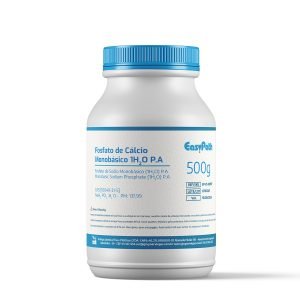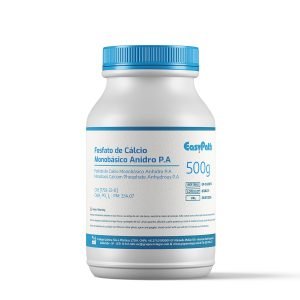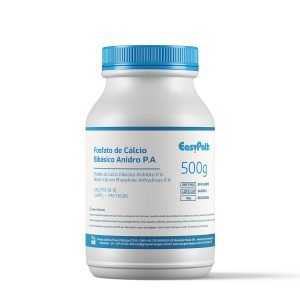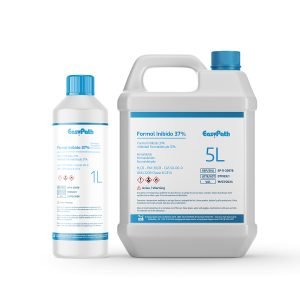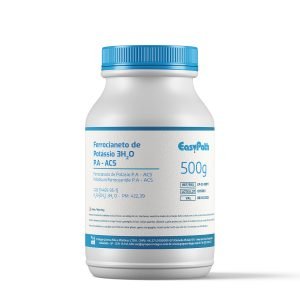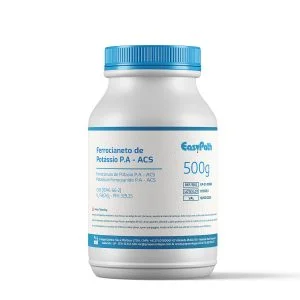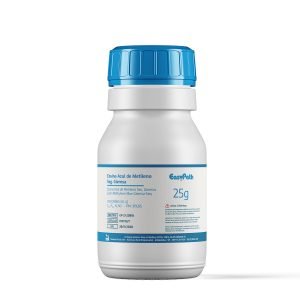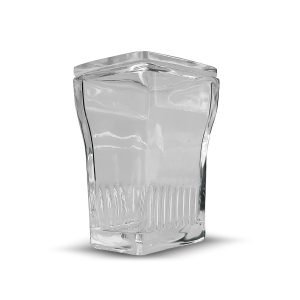Key compound in many chemical reactions, acting as a pH regulator.
Used in research laboratories and industry, especially in the production of culture media.
High solubility, facilitating the preparation of aqueous solutions for various laboratory applications.
It maintains its properties over time, guaranteeing consistent results in experiments.
Meets strict criteria for analytical and laboratory applications.
Moisturizes: Bibasic Sodium Phosphate (12H₂O) contains twelve water molecules, providing optimal solubility in water.pH regulator: Effective in maintaining pH stability, crucial for sensitive laboratory processes.High-level purity: PA classification, guaranteeing superior quality for specific laboratory applications.Use in cytology: Often used for buffering and preserving biological samples.Available in Bottles: Available in 1000g and 500g bottles to meet different laboratory needs.
Select options
This product has multiple variants. The options may be chosen on the product page
Hydration: Bibasic Sodium Phosphate (2H₂O) contains two water molecules, which makes it easy to soluble in aqueous solutions.Application in Analysis: Used as a buffering agent, essential for pH control in various chemical laboratory reactions.Guaranteed purity: PA classification, ensuring that the reagent meets strict quality standards for laboratory use.Solid Form: Available in crystal form, allowing easy handling and accurate weighing.Versatility: Suitable for a variety of applications, including histological staining and sample preservation.
Select options
This product has multiple variants. The options may be chosen on the product page
Excellent for microbiology and cell culture applications, promoting optimal growth of microorganisms.
It works well in a variety of culture media formulations, increasing versatility in laboratories.
Source of phosphorus and calcium, essential for cell development.
Available in practical bottles, making it easy to use in laboratory environments.
The product is tested to meet strict analytical quality standards.
Ideal for cell culture and biotechnology applications, offering essential support for cell growth.
Versatile, it can be used in a variety of areas, including chemical analysis and pharmaceutical formulations.
High stability in solutions, allowing long periods of storage without loss of quality.
Used as a source of calcium in food supplements and pharmaceutical products.
It meets strict quality standards for laboratory use, guaranteeing reliable results.
Effective fixing agent: Preserves cell morphology and structural integrity in samples.Additional inhibitors: Contains inhibitors that reduce the formation of oligomers, increasing efficacy.Safe storage: Available in HDPE bottles, minimizing the risk of leaks.Versatile applications: Suitable for a wide range of uses in histology and pathological anatomy.Regulatory compliance: Product registered with ANVISA, guaranteeing safety and quality in diagnostic use.
Select options
This product has multiple variants. The options may be chosen on the product page
Used in electrochemical processes and organic synthesis.
Known for forming stable complexes with metals, facilitating their detection.
Used as a reducing agent in various chemical reactions.
It has low toxicity properties and is safe for laboratory use.
Essential in environmental analysis for detecting pollutants.
Important as a reducing agent in chemical reactions.
Used in heavy metal analysis due to its ability to form complexes.
Stable in solution, guaranteeing reliable analysis results.
Used in the manufacture of dyes and pigments.
It has applications in various industries, including pharmaceuticals.
Common in chemical analysis and titrations due to its stability.
Used as an indicator in redox reactions, making it easier to identify end points.
It has low toxicity, making it safe to handle in the laboratory.
Applicable for testing the presence of iron in samples.
Used in the production of pigments in various industries.
Highly soluble in water, facilitating chemical preparations.
It has antimicrobial properties, ideal for preserving cultures.
Effective as a disinfectant on surfaces and laboratory equipment.
Used as an intermediate in various organic syntheses.
High purity, meeting the required analytical standards.
Acid dye ideal for staining in histology and microbiology.
Stable in aqueous solutions, guaranteeing consistent results.
Used in staining techniques such as Gram and cell staining.
It has many applications in scientific research beyond microbiology.
It meets regulatory standards, guaranteeing safety and efficacy.
Dye used in histology and microbiology to stain cells.
Provides clear evidence of cell structures and microorganisms.
Easy to apply to microscopy slides, facilitating visualization.
Used in laboratory diagnostics and clinical analysis.
Available in 25g bottles, ideal for small and medium-sized laboratories.
Salt of EDTA, used as a chelating agent in laboratories.
Important for removing unwanted metal ions from solutions.
Used in various applications, including chemical and biological analysis.
High purity, ensuring reliable results.
Available in 500g jars, suitable for large quantities.
Stabilized form of EDTA, used in chemical analysis.
Effective chelating agent for removing metal ions.
Used in the preservation of biological solutions and chemical reactions.
Available in 500g bottles, ideal for laboratories that require efficiency.
Consistency and quality guaranteed in laboratory applications.
A chelating agent widely used to bind metal ions.
Important in analytical and biological chemistry for stabilizing solutions.
Used to remove metal contaminants from samples.
Available in 500g bottles, suitable for high-demand applications.
High purity, guaranteeing reliable analysis results.
Space efficiency: The vertical design can accommodate up to 9 slides, optimizing space on laboratory benches.Sample protection: The lid prevents contamination and evaporation of the reagents, guaranteeing the integrity of the samples during the staining process.Durability: Made of glass, the tank resists acids and solvents, increasing the longevity of the equipment.Ease of Handling: The slots make it easy to insert and remove the blades, making the coloring process more agile.Versatility: Ideal for various laboratory techniques, it is compatible with different staining protocols in cytology and histology .
Suitable capacity: Available in 400ml and 700ml sizes, offering the versatility needed for varying volumes of solution.High-resistance material: Durable, chemical-resistant glass, ideal for frequent use in laboratories.Visibility for Control: The transparency of the glass allows visual monitoring of coloration, which is essential for precise processes.Cradle compatibility: Designed for use with EasyPath cradles, allowing vertical accommodation of blades and uniform coloring.Protective cap: Securely fitting cap that minimizes evaporation of the solution and protects against environmental contamination.
Select options
This product has multiple variants. The options may be chosen on the product page
Practical use: Hinged lid system for easy opening and closing during coloring.Resistance and durability: Made of resistant nylon, ideal for demanding chemical environments.Safety in coloring: Resistant to acids and solvents, guaranteeing safety when handling chemical substances.Versatile applications: 250ml capacity, suitable for various coloring techniques.Compatibility with staining systems: Ideal for use with CitoColor and HematoColor, increasing process efficiency.










